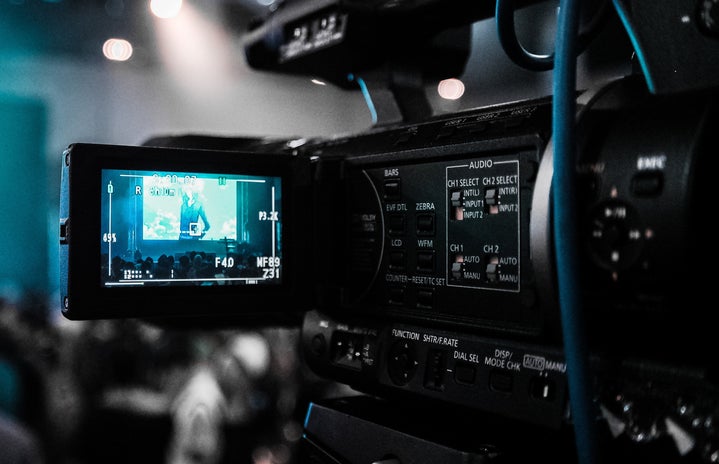“Asians are good at math”. That is, certainly, a sentence that many have heard before and have faced as something positive. But it is not! Actually, this saying is a manifestation of prejudice in disguise. It is a burden placed upon the East-Asians that don not fit in this arbitrary pattern.
Historically, the Asian have been represented basically in two forms: as extremely stupid or as highly intelligent. In the 18th century, the East-Asians were judged and seen as individuals of inferior mental capacity, and even as some sort of animal. Towards the end of the 19th century, due to Japan’s participation in World War 2, they were depicted as threats to world peace and to certains economies, mainly the American’s.
In the 60’s and 70’s, the myth of the “Model Minority” was strongly propagated, most strongly in the United States, but overall, it spreaded across the globe. According to it, those of Asians ancestry were excellent workers and extremely talented at math and science, but were also passive, not daring to complain about anything. This myth, however, generated two results: it polarized the relationships between minorities and created a source of pressure and worry to young asians.
The polarization between groups was created by the places of opposition in which they were put, since a sort of “hierarchization” of the minorities that placed the Asians on top was elaborated. That not only was responsible for the surge of a sentiment of hostility amongst the minorities, but was also detrimental to the other groups. Fortunately, this part of the myth does not exist so strongly nowadays.
On the other hand, the impact of this belief upon the youth can still be seen. It isn’t rare to find young Asians that report feeling dislocated when opting to concentrate their studies in areas far from math and science. This is the case for the Karen Tamaki, who is divided between studying design or medicine: “A big part of my father´s family is made up of physicians, and I was a little pressured to follow their steps. But I’m also considering taking up design, since I enjoy that area a lot”.
About the pressure that she feels, Karen says she doesn’t believe it comes from her parents themselves, but from an internalized prejudice in her Asian family.
One of the origins of this prejudice is the way in which Asians are seen by society, since there’s a lack of Asian representativity, and even when it occurs, it’s based on misconceptions.
Regarding this issue, the business student, Ji Park says: “There are many characteristics that the media uses to represent Asians that aren’t true, that are a huge stereotype”. Characteristics such as the natural skill for math, the shyness, the eccentricity and the submissiveness, are eternalized in the public’s mind by the way Asians are portrayed.
This characterization is especially harsh on women, because they are represented almost exclusively as young, pure, innocent and submissive, or as manipulative, calculating, cold and cruel. It’s worth noting that, regardless of the representation line that is followed, the East-Asian woman is a victim of ruthless sexualization.
Fortunately, this scenario of discrimation and prejudice seems to be slowly changing. Step by step, the media has turned its attention to contents developed by Asians that try to present a different side of this group that has remained unseen by the public so far.
In an attempt to increase and improve the representativity, Giulia Mori Aragão, a student of Film and Media Production, intends on using her future work to insert this minority in more cultural works. “It’s a very broad area, but I want to write stories and direct.”, she comments about her plan.
Giulia also highlights the matter of casting more Asian performers in movies and TV shows. She, once again, wishes to make her future work into a tool to shed more light on these people.
Ji Park mentions the Oscar winning motion picture “Parasite” and the recent Netflix show “Squid Game” as productions that take down stereotypes, and celebrates the importance of these works in the fight against prejudice. Both of them have been extremely well-received by the critics and the public, something that brought attention to the Korean audiovisual industry.
Karen references the most recent Pixar movie “Turning Red” as another example of the discrimination-free representativity in the media. However, she adds: “But there are still many humorous scenes that satirize and generalize Asians, which shows that there’s still a lot of prejudice widespread.”
Despite the surge in more productions with more and better Asian representativity, such as the Marvel Studio’s picture “Sang Chi and the Legend of the Ten Rings” and Netflix’s “To all the Boys I’ve Loved Before”, there’s still a long way to go to completely abolish the misconceptions of the “Model Minority” myth.
Nevertheless, the future is promising, with an ever growing number of young Asian minds using the arts to win over this prejudice.
—————————————————————————-
The article above was edited by Camila Nascimento.
Liked this type of content? Check Her Campus Cásper Líbero home page for more!



